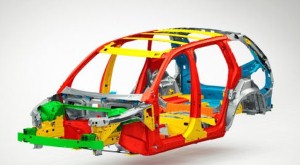Volvo talks up latest Scalable Product Architecture
12/12/2013 16:55
Share

Volvo talks up latest Scalable Product Architecture
The new Scalable Product Architecture (SPA) from Volvo could potentially be the start of advances to create 'crash-free' vehicles, the manufacturer has claimed.
Not only does the technology create a whole new visual signature for future Volvo vehicles, it also helps the company to make its position in safety leadership even more apparent.
Volvo has set the ambitious target of ensuring that by 2020, no one should be killed or injured in any new model from the brand.
The manufacturer boasts that significant improvements now mean that it provides excellent protection in worst-case scenarios and delivers innovative features to help accident avoidance.
Jan Ivarsson, senior manager of safety strategy and requirements for Volvo, said: “The new architecture opens up for further improvements. Seven per cent of the safety cage in the original XC90 was made of hot-formed boron steel. The structure in the upcoming all-new XC90 features over 40 per cent hot-formed steel, which translates into significantly improved strength but without adding mass or weight.”
Volvo has said the driver is at the heart of all safety developments, based on situations encountered in real traffic situations.
Electronic systems accompany the super strong boron steel safety cage, with one example being the rearward-facing radar, that detects rear impact and adjusts safety belts accordingly.
Furthermore, crash avoidance systems use cameras, radars and sensor technologies in order to detect objects surrounding the car, especially at higher speeds.
“One of the most important focus areas within collision-avoidance is to help prevent unintentional road departures by autonomous steering intervention in critical situations. Unintentional road departure is the collision type that results in most deaths and serious injuries in modern traffic,” Mr Ivarsson added.
Posted by Louise Clark